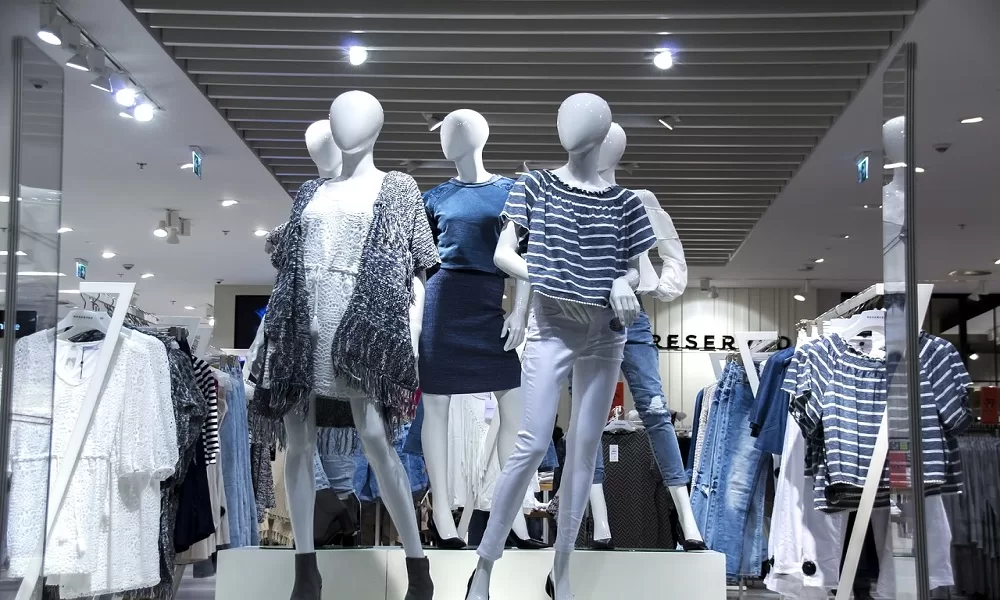Fabric Fit Guide: How to Pick Branded Clothing That Moves With You
Fabric Fit Guide: How to Pick Branded Clothing That Moves With You
Blog Article
Comprehending Garments: The Relevance of Fabric Options in Your Closet
The option of material in apparel plays a pivotal duty in both aesthetic appeals and performance. Different products use differing levels of convenience, longevity, and breathability, straight influencing the user's experience. Recognizing these subtleties can enhance one's closet significantly. Yet, numerous forget just how these choices can influence not just personal design, yet likewise sustainability. What textile decisions could redefine your closet and straighten it with both design and obligation?
The Role of Material in Style and Functionality

Common Material Kinds and Their Characteristics
When picking apparel, understanding the features of usual material types is vital for making informed choices. Cotton, a widely-used natural fiber, is understood for its breathability, adaptability, and soft qualities, making it ideal for laid-back wear and daily garments. Bed linen, an additional natural alternative, boasts superb moisture-wicking buildings and an unique texture, perfect for warm climates.Wool, commonly preferred for its heat and longevity, differs in fineness; merino wool is soft against the skin, while coarser kinds are utilized for outerwear. Artificial fabrics like polyester and nylon supply sturdiness and resistance to creases, making them preferred for activewear and traveling garments. Blends, which incorporate artificial and all-natural fibers, can boost performance while preserving comfort. By acknowledging these textile characteristics, people can pick clothing that aligns with their lifestyle and aesthetic choices.
Breathability and Comfort: Selecting the Right Fabrics for Various Environments
Selecting the appropriate materials for numerous environments can greatly boost convenience and overall wearability. Breathable products are vital in hot environments, as they permit air circulation and moisture evaporation. Fabrics such as cotton, bed linen, and moisture-wicking synthetics properly attract sweat far from the body, keeping the user cool and dry. On the other hand, in chillier climates, thicker textiles like woollen or fleece provide insulation while maintaining breathability, making sure heat without overheating.Additionally, the choice of material weight plays a crucial function; lightweight textiles are preferable for summertime, whereas much heavier options are fit for winter wear. Understanding the distinct residential or commercial properties of each material makes it possible for people to dress properly for differing climate condition. Eventually, choosing comfortable and breathable materials customized to particular climates can greatly boost day-to-day comfort and improve the total experience of wearing clothes.
Sturdiness and Treatment: Just How Material Influences Durability of Your Closet
Picking the appropriate materials can significantly influence the durability and care demands of a closet. Fabrics such as cotton and polyester are recognized for their durability and simplicity of maintenance, making them suitable for day-to-day wear. In comparison, fragile products like silk and lace require even more mindful handling and specialized cleansing methods, which can boost the moment and initiative required for care. Branded Clothing.Durability is likewise influenced by the material's weave and coating; tightly woven materials have a tendency to withstand deterioration much better than freely woven options. Furthermore, artificial blends typically offer improved toughness, incorporating the very best top qualities of multiple fibers.Understanding the treatment guidelines for every material is essential, as incorrect washing or drying out can result in premature wear. Inevitably, picking sturdy products can result in a longer-lasting closet, reducing the regularity of substitutes and adding to a much more lasting fashion choice
The Influence of Textile on Fit and Shape

Sustainable Textile Selections: Making Eco-Friendly Decisions
The influence of textile prolongs past fit and shape to encompass environmental aspects, triggering a growing passion in lasting material options. Environmentally friendly fabrics, such as natural cotton, hemp, and Tencel, are getting grip among customers that prioritize sustainability in their wardrobes. These materials are often generated with fewer chemicals and water, decreasing their environmental footprint.Additionally, recycled fabrics, made from post-consumer waste, provide an innovative solution to the textile sector's contamination problem. Brands progressively accept openness in their sourcing methods, enabling consumers to make enlightened decisions regarding their purchases.Choosing sustainable fabrics not just sustains moral techniques but also motivates the apparel industry to embrace more accountable production techniques. As understanding of ecological concerns increases, individuals are advised to review the lasting effect of their material options, promoting an activity towards a more eco aware and lasting method to style.
Raising Style: Exactly How Fabric Can Transform an Attire
While numerous may concentrate on shade and cut when choosing an outfit, click site the choice of textile plays a necessary role in elevating design and improving total look. Various products convey distinct moods and messages; for instance, silk shows deluxe and sophistication, while jeans provides a casual, unwinded vibe. The texture and drape of a textile can dramatically alter the silhouette, with structured fabrics providing a sleek appearance and softer ones producing a much more fluid, loosened up aesthetic.Moreover, the weight of the material affects wearability throughout periods. Lightweight fabrics like bed linen and cotton are excellent for summer, while larger materials such as wool and velour supply heat and style in chillier months. Recognizing material buildings, such as breathability and stretch, additionally empowers individuals to make educated options that boost comfort without endangering style. Eventually, the appropriate material can transform an outfit from average to extraordinary, making it a crucial consideration in any type of wardrobe.
Often Asked Inquiries
How Do I Determine the Material Web Content of My Clothes?
To determine material web content, one can check out treatment tags, conduct burn examinations for fiber identification, or speak with material swatches. These approaches help differentiate materials, making sure informed choices for clothes care and upkeep in day-to-day wear.
Can Textile Choice Affect My Mood or Self-confidence?
Material option can greatly influence an individual's go to these guys state of mind and confidence. Branded Clothing. Particular materials may stimulate sensations of convenience or beauty, while others can really feel limiting or unflattering, eventually influencing self-perception and psychological wellness throughout the day
What Fabrics Are Ideal for Delicate Skin?
For people with sensitive skin, natural fabrics like linen, bamboo, and cotton are commonly recommended. These products are breathable, hypoallergenic, and much less most likely to cause inflammation, making them suitable options for comfort and skin wellness.
Just how Do I Effectively Laundry and Take Care Of Different Fabrics?
To correctly care and clean for different materials, one need to consider each product's details needs, consisting of temperature setups, cleaning agents, and drying out methods, making certain longevity and maintaining the fabric's initial qualities for ideal usage.
Are There Specific Fabrics for Athletic or Performance Put On?
Sports or efficiency wear commonly utilizes fabrics such as spandex, nylon, and polyester. These products are made for moisture-wicking, breathability, and flexibility, enhancing motion and comfort during physical activities while supplying toughness and support. On the other hand, in chillier environments, thicker fabrics like woollen or fleece supply insulation while maintaining breathability, guaranteeing heat without overheating.Additionally, the selection of textile weight plays a crucial duty; light-weight materials are preferable for summer season, whereas larger choices are suited for wintertime wear. In contrast, fragile materials like silk and lace require more mindful handling and specialized cleansing methods, which can raise the time and effort needed for care.Durability is also affected by the textile's weave and surface; firmly woven textiles have a tendency to withstand wear and tear far better than loosely woven options. In contrast, rigid materials can limit movement however supply a traditional, polished look.Moreover, the thickness and texture of the textile can influence the aesthetic perception of body shape. The influence of fabric prolongs past fit and shape to include environmental elements, triggering an expanding interest in sustainable fabric choices. The texture and drape of a material can substantially change the silhouette, with structured materials providing a polished appearance and softer ones producing a much more fluid, loosened up aesthetic.Moreover, the weight of the textile influences wearability throughout seasons.
Report this page